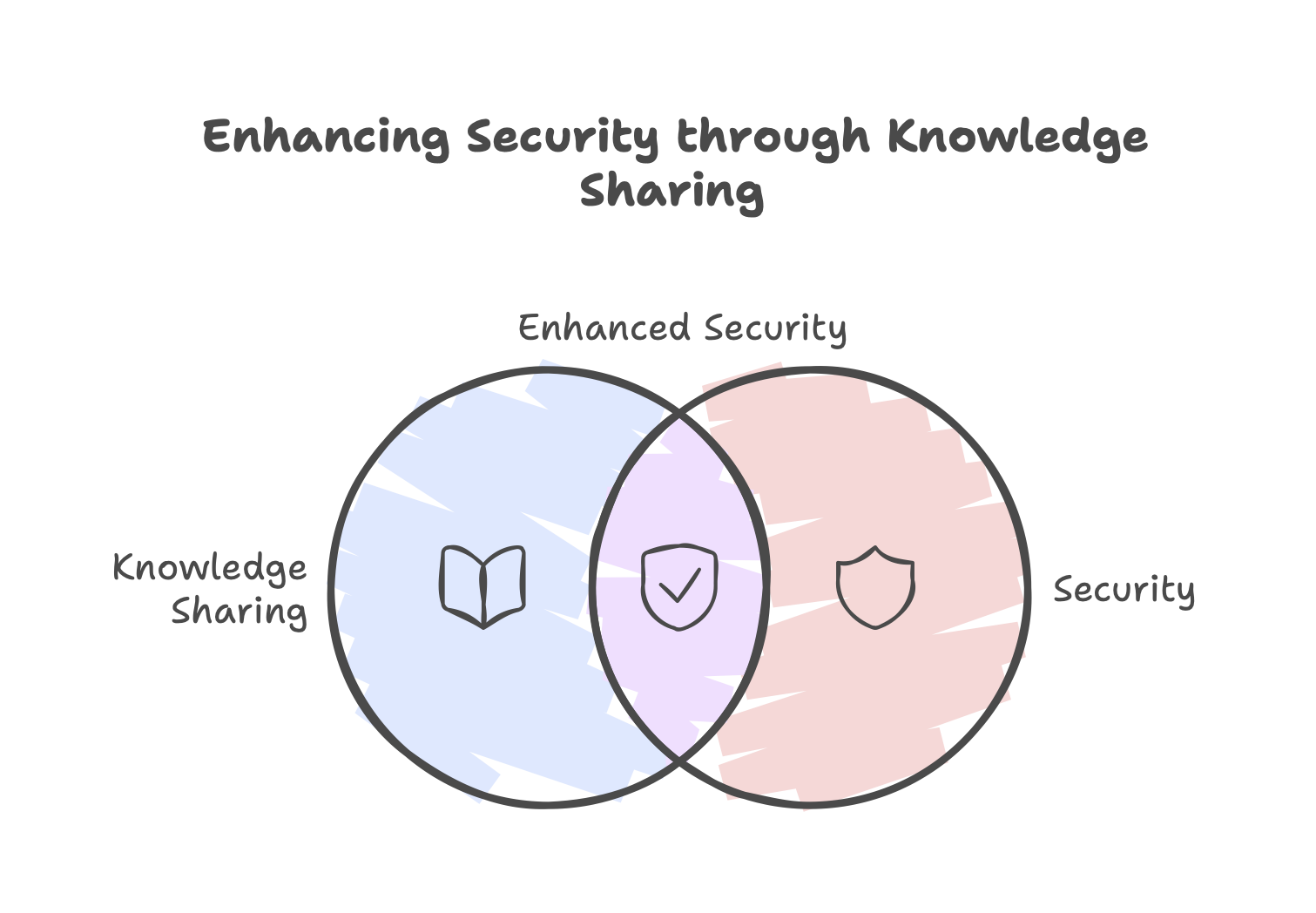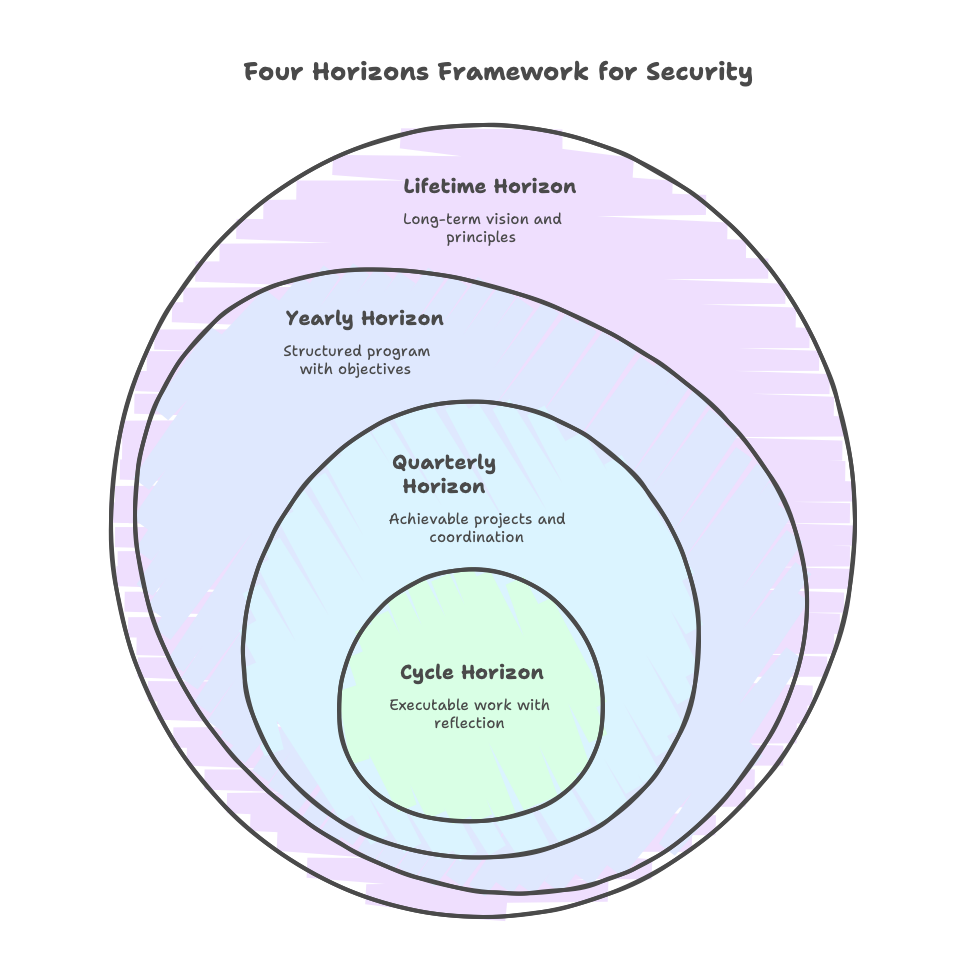Open Sourcing the Peak Defence Method: Transforming Security Management
Why we're open sourcing our security methodology to help organizations build more effective, resilient security programs across all maturity levels.
· Roman Jasins
You can skip directly to the Peak Defence Method, or keep reading to learn why we’re open sourcing our security methodology.
The Growing Gap Between Security Investment and Outcomes
Despite record spending on tools and technologies, many organizations still struggle to build effective security management programs. The troubling reality is that the gap between security investment and actual outcomes continues to widen—and for good reason.
Security isn’t just about technology. It never has been.
Most security failures don’t stem from a lack of tools; they come from fundamental disconnects in how security is managed:
- Security teams operate in isolation from the rest of the organization
- Programs focus on prevention while neglecting resilience and recovery
- Work expands indefinitely without clear boundaries or completion criteria
- Security requirements arrive too late in development and business processes
- Cross-functional dependencies create bottlenecks and implementation failures
At Peak Defence, we’ve spent a long time developing, testing, and refining a methodology that addresses these challenges. Our approach integrates people, process, and technology in a framework that scales from startups to enterprises, providing clear guidance while adapting to organizational context.
Today, we’re taking a step that might seem counterintuitive for a security company: we’re open sourcing our entire methodology.
Why Open Source Our “Secret Sauce”?
The decision to open source our methodology wasn’t an obvious one. We’ve invested countless hours refining our approach, testing it with organizations of all sizes, and learning from both successes and failures.
But the answer to “why share it?” is profoundly simple: security works better when knowledge is shared, not hoarded.
We believe that improving the security posture of organizations worldwide serves a greater purpose than maintaining proprietary methods. By making our methodology accessible to everyone, we aim to:
- Elevate the entire industry’s approach to security management
- Reduce unnecessary duplication of effort as organizations reinvent similar wheels
- Create a community of practice that continuously improves our collective capabilities
- Make effective security accessible to organizations of all sizes, not just those with massive budgets
As threats continue to evolve and resources remain constrained, we can’t afford to keep effective security approaches locked away. The challenges we face demand collaborative solutions.
The Peak Defence Method: A Meaningful Approach to Security
Our methodology addresses the fundamental disconnect between security investment and outcomes by providing a comprehensive framework built on these core principles:
- Risk-based prioritization - focusing security efforts on what matters most using practical risk assessment techniques
- Balances resilience with prevention - designing security that adapts to inevitable failures
- Decentralizes execution with clear guardrails - empowering teams while maintaining direction
- Creates visible progress and value - delivering concrete security improvements that business leaders can see
- Establishes time-bounded security work - preventing endless projects through deliberate scoping
The foundation of this approach is what we call the Four Horizons Framework—a structured way to connect security strategy with daily execution:
The Four Horizons Framework

Our framework spans multiple time horizons, ensuring both strategic vision and practical execution:
Lifetime Horizon (Years) - Security principles and architecture that guide long-term decisions:
- Enterprise security vision and principles
- Core risk tolerance framework
- Long-term security capability planning
- Cross-functional security operating model
Yearly Horizon (12 Months) - Structured security program with clear objectives:
- Annual risk assessment and prioritization
- Major security capability initiatives
- Resource allocation and planning
- Compliance roadmap and governance
Quarterly Horizon (3 Months) - Breaking down annual goals into achievable projects:
- Shaped security initiatives with clear appetites
- Security portfolio management
- Progress measurement and adaptation
- Cross-functional delivery coordination
Cycle Horizon (6 Weeks + Cool-down) - Converting projects into executable work:
- Time-bounded security implementation cycles
- Team autonomy with clear boundaries
- Visible progress tracking and completion
- Built-in reflection and improvement
This structure creates a virtuous cycle where strategic direction guides tactical execution, and implementation learnings inform future strategy.
Cross-Functional Security Integration
One of the most distinctive aspects of our methodology is how it addresses security as an inherently cross-functional capability rather than a siloed technical function.
Traditional approaches treat security as something applied to the business from the outside. The Peak Defence Method integrates security across organizational functions:
- Product/Engineering: Security patterns that enable rather than block development
- Operations: Resilience capabilities that span prevention, detection, and recovery
- Legal/Compliance: Risk-informed frameworks that satisfy regulations without checkbox thinking
- Business Units: Security enablement that aligns with business objectives and constraints
By providing function-specific guidance and creating clear interfaces between security and other domains, we transform security from a barrier to an enabler of business success.
A Methodology That Grows With You
Organizations at different maturity levels have fundamentally different security needs. A startup of 20 people can’t implement security the same way as a global enterprise of 20,000—and shouldn’t try to.
Our methodology addresses this reality through a progressive disclosure approach with three distinct maturity levels:
Level 1: Startup Foundation (5-50 employees)
For startups and small organizations, we focus on:
- Essential security controls with maximum impact
- Simple processes with minimal overhead
- Direct collaboration across the entire team
- Practical guidance that balances security with agility
Example: Our startup-level guidance for incident response provides a simple one-page playbook that any team member can follow, focusing on the critical first steps rather than comprehensive procedures.
Level 2: Scale-up Enhancement (50-500 employees)
As organizations grow, we provide:
- Structured security programs with dedicated resources
- Balanced processes that scale without bureaucracy
- Security champions network across departments
- Specialized guidance for different functions
Example: Our scale-up approach to access management includes role-based templates, departmental integration guides, and automation patterns that maintain security while supporting organizational growth.
Level 3: Enterprise Optimization (500+ employees)
For large organizations, we offer:
- Comprehensive security architecture and governance
- Enterprise integration across business units
- Specialized security functions with clear interfaces
- Advanced resilience and adaptation capabilities
Example: Our enterprise-level risk management framework includes business capability mapping, cross-functional governance structures, and specialized risk assessment methodologies for different organizational contexts.
By providing right-sized guidance for each maturity level, we ensure organizations can implement effective security appropriate to their size and complexity—and evolve their approach as they grow.
What You’ll Find in the Open Source Methodology
Our comprehensive playbook includes practical guidance you can implement today:
Core Methodology Chapters
- Core Principles: The philosophical foundation of resilience-oriented security
- Planning Horizons: How to organize security work across different timescales
- Shaping Security Work: Defining security initiatives at the right level of abstraction
- Security Roles and Responsibilities: Building effective security teams and governance
Why Now?
The timing of this decision isn’t random. We’re at an inflection point in cybersecurity where:
- AI is transforming the security landscape, creating both opportunities and challenges
- Resource constraints are intensifying, forcing teams to do more with less
- Threat actors are becoming increasingly sophisticated, requiring more intelligent defensive approaches
- Cross-functional security has become essential, as security touches every aspect of business
By open sourcing our methodology now, we aim to help organizations navigate these challenges with approaches proven to work in real-world environments.
What This Means for Our Business
Some might wonder how open sourcing our methodology aligns with our business interests. We see it as perfectly aligned with our values and business model for several reasons:
We believe in our technology. While our methodology provides the framework, our Wingman platform offers the most efficient implementation of these principles.
We’re playing the long game. By helping elevate industry practices, we’re creating an ecosystem where our approach to security management becomes the standard.
We practice radical transparency. This move aligns with our core value of openness and our belief that security thrives in the light, not in the shadows.
Our professional CISO services complement the methodology. Organizations that want expert guidance implementing these principles can still engage with our professional services team.
In essence, we’re making a bet that by empowering the entire community with better security approaches, we’ll build a stronger foundation for our business and the industry as a whole.
Join Us in Transforming Security Management
The open source Peak Defence Method represents just the beginning of a journey. The real transformation happens when organizations make these principles their own, adapting them to their unique contexts and needs.
How to Get Started
- Access the Peak Defence Method: Visit peakdefence.com/resources/method to access the complete methodology
- Implement the Approach: Start with the assessment framework to identify your first improvement areas
- Contribute Your Experience: Share your adaptations and insights to help evolve the methodology github.com/peakdefence/method
For Different Roles
- Security Leaders: Use the methodology to structure your security program and communicate value
- Technology Leaders: Leverage cross-functional guidance to integrate security into technology processes
- Business Executives: Understand how security capabilities support business objectives
- Practitioners: Implement practical security improvements using proven approaches
Looking Forward
This is just the beginning of our open source journey. In the coming months, we’ll be:
- Publishing case studies of real-world implementations
- Expanding function-specific guidance based on community feedback
- Building additional tools and templates for methodology implementation
Security has always been a collective challenge requiring collective solutions. By open sourcing our methodology, we’re taking a meaningful step toward a future where effective security management is accessible to all organizations, not just those with the largest budgets or most sophisticated teams.
Because ultimately, we believe that security isn’t just what we do—it’s what we enable others to do. And that’s a mission worth sharing openly.
Peak Defence exists to transform how organizations manage security through the perfect integration of People, Process, and Technology. Our AI-native Wingman platform and expert professional services help organizations build more resilient, effective security programs in an increasingly complex threat landscape.
Related Topics:
Related Articles
The Missing Link in Security Management: Why Cross-Functional Integration Matters
Discover why breaking down the barriers between security and other organizational functions is the key to building effective security....
Read More →Stay Updated
Subscribe to receive the latest security insights, industry trends, and expert advice directly to your inbox.
